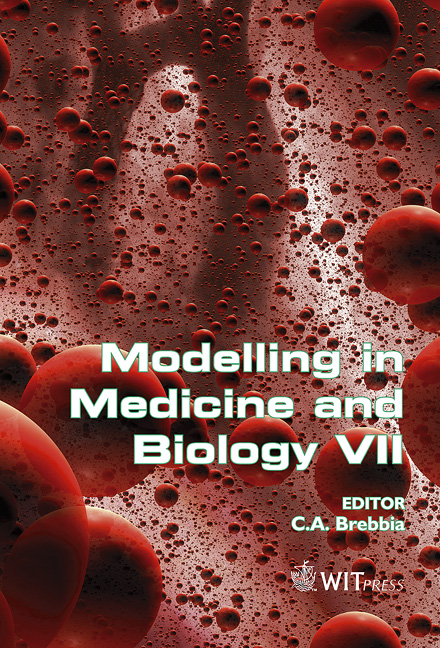Analysis, Simulation And Prediction Of Contact Stresses In Articular Cartilage Of The Knee Joint
Price
Free (open access)
Transaction
Volume
12
Pages
10
Published
2007
Size
2,580 kb
Paper DOI
10.2495/BIO070061
Copyright
WIT Press
Author(s)
A. Vidal, R. Lesso, R. Rodríguez, S. García & L. Daza
Abstract
Articular cartilage (AC) has an essential function in the best performance of the human body’s joints, but it has a limited capacity of regeneration and the initial cause that develops the pathological degenerative process is still unknown. It is believed that cartilage damage due to knee osteoarthritis is mechanically induced. Thus, to investigate such a phenomenon and analyze and simulate the biomechanical behavior of the knee joint, a virtual 3D knee prototype was created using a commercial finite element code, which includes the femur, tibia and AC as a deformable solid model. This paper shows the stress distribution found in AC in the femur and the tibia. The factors were obtained by applying a load range of 700 to 2800 N, 0º in flexion and different cases with physiological valgus variation and a graphical model of stress prediction to the femur cartilage was created using the stress behavior with the different factors. In general, the results show that different factors like being overweight (load> 700N) and misalignment (valgus variation) could damage the AC because they increase the stress magnitude and it comes into the cyclic damage range (5–10 MPa), which progressively produces articular cartilage damage and enhances the osteoarthritis phenomenon due to mechanical factors. Keywords: articular cartilage damage, finite element analysis, contact element, biomechanics, knee joint, osteoarthritis, physiological valgus. 1 Introduction The knee is one of the most important joints of human body. It allows, with its flexion-extension movement, the displacement of the body. The human knee joint is composed mainly of the femur, tibia, patella, menisci and articular cartilage.
Keywords
articular cartilage damage, finite element analysis, contact element, biomechanics, knee joint, osteoarthritis, physiological valgus.





